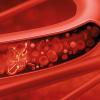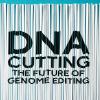Modifying a biopsy needle to vibrate rapidly at 30,000 times per second improves yields and could mean potentially a less painful experience for patients.

The claim comes from a new paper, published in Scientific Reports, which explains how ultrasonic vibrating needles work.
Emanuele Perra, lead author, said: “The vibrations provide energy to the tissue to make it more fluid-like.
“The vibrations are localised to just the tip, so it doesn’t affect any other tissue except a small region around the needle. We were able to show that the ultrasonic vibrations increase the biopsy yield by three to six times compared with the same needle without ultrasound, which was even greater than we hoped for.”
The vibrations are above the human hearing range, and the wave amplitude is small enough that it shouldn’t feel much different to a normal blood test.
Image credit |Aalto University




